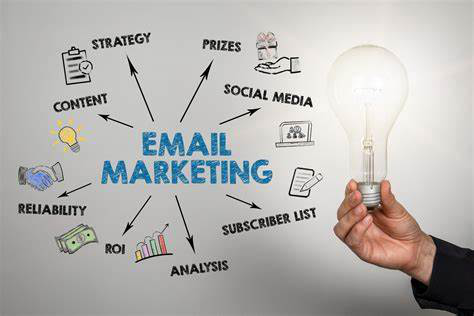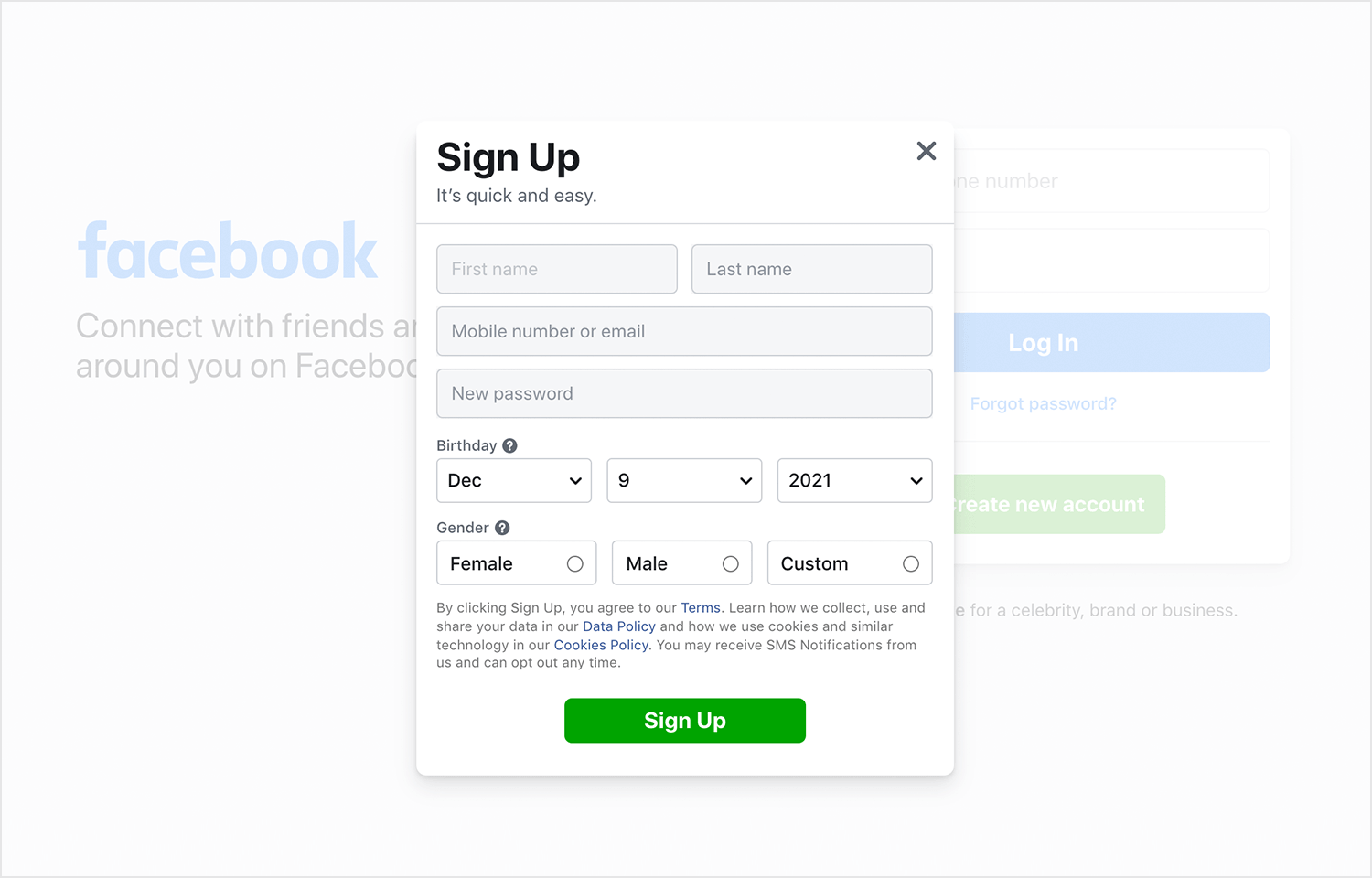How to Get More Insights from Emails Collected Through Signup Forms?

In today's digital age, email has become an essential tool for businesses to reach and engage with their audience. Every email you send out holds valuable insights that can help you understand your customers better and improve your marketing strategies. By collecting emails through signup forms,
You have an opportunity to gather essential data that can provide you with deeper insights into your audience's preferences and behaviors. In this article, we will explore how you can maximize the insights gained from emails collected through signup forms.
Understanding the Importance of Email Insights
Before diving into the specifics, let's first understand why email insights matter in the first place. Email insights refer to the data and information derived from analyzing the emails you receive from your audience. These insights offer a glimpse into your subscribers' interests, engagement levels, and even their purchasing patterns.
Armed with this knowledge, you can tailor your marketing efforts to resonate with your audience on a deeper level. Email insights can provide actionable information that can directly impact your business growth and bottom line. When it comes to understanding your audience, email insights are a goldmine of valuable information. By analyzing the data collected from your subscribers, you can gain a deeper understanding of their needs, preferences, and behaviors.
This understanding allows you to create targeted marketing campaigns that speak directly to your audience's interests. By delivering personalized content, you can increase engagement rates, improve conversion rates, and ultimately drive revenue for your business.
But the benefits of email insights go beyond just understanding your audience. These insights also play a pivotal role in driving business growth. By analyzing the data collected through signup forms, you can gain insights into the demographics, interests, and preferences of your customers. Armed with this knowledge, you can create highly targeted marketing campaigns that resonate with your audience on a deeper level. This level of personalization can lead to higher engagement rates, increased conversion rates, and ultimately, improved revenue for your business.
The Role of Email Insights in Business Growth

Email insights play a pivotal role in driving business growth. By analyzing the data collected through signup forms, you can better understand your customers' needs and preferences. Armed with this knowledge, you can create targeted marketing campaigns that speak directly to your audience's interests.
This personalization can lead to higher engagement rates, increased conversion rates, and ultimately, improved revenue for your business. Furthermore, email insights can also help you identify trends and patterns in your audience's behavior. By analyzing the data, you can uncover valuable insights such as the most popular products or services, the optimal time to send emails, and the types of content that resonate the most with your subscribers. Armed with this information, you can make data-driven decisions that can have a significant impact on your business growth.
Additionally, email insights can also help you identify opportunities for improvement. By analyzing the data, you can identify areas where your email marketing campaigns may be falling short and make necessary adjustments. Whether it's improving subject lines, optimizing email design, or refining your call-to-action, email insights can provide valuable guidance on how to enhance your email marketing strategy and drive better results.
Why Email Insights Matter in Marketing Strategies
No marketing strategy is complete without the integration of email insights. These insights allow you to fine-tune your marketing efforts, ensuring that you are delivering the right messages to the right people at the right time. By understanding your audience's behavior and preferences.
You can segment your email lists and create highly personalized content that resonates with each segment. This level of customization can significantly improve the effectiveness of your marketing campaigns and help you achieve your business goals.
Email insights also enable you to track and measure the success of your marketing campaigns. By analyzing metrics such as open rates, click-through rates, and conversion rates, you can gain valuable insights into the performance of your email marketing efforts. This data allows you to identify what's working and what's not, enabling you to make data-driven decisions to optimize your marketing strategies.
Furthermore, email insights can also help you identify opportunities for growth and innovation. By analyzing the data, you can uncover new trends, preferences, and behaviors among your audience. Armed with this information, you can identify new market segments, develop new products or services, and explore new marketing channels to expand your reach and drive business growth.
In conclusion, email insights are a vital component of any successful marketing strategy. By leveraging the data and information derived from analyzing your emails, you can gain a deeper understanding of your audience, drive business growth, and optimize your marketing efforts for maximum effectiveness. So, make sure to prioritize email insights in your marketing strategy and unlock the full potential of your email marketing campaigns.
Setting Up Your Signup Forms for Maximum Data Collection

A well-designed signup form is the first step in collecting valuable email insights. To maximize data collection, you need to determine the key information you want to gather from your audience. This could include their name, email address, location, preferences, or other relevant details.
However, it's important to strike a balance between the information you request and the friction it may introduce. Keep your signup forms simple and user-friendly to encourage more signups. When it comes to setting up your signup forms, there are several factors to consider. Let's dive deeper into the process and explore some best practices to ensure you're collecting the right data effectively.
Key Information to Collect Through Signup Forms
When designing your signup forms, it's crucial to identify the key information that will provide you with actionable insights. Start by considering the specific goals of your email marketing campaign. Are you looking to tailor your content based on geographic location?
Do you want to segment your audience based on their interests or purchase history? By identifying the specific data points you need, you can optimize your signup forms accordingly. For example, if you're a clothing retailer or if you are running a clothing brand, you may want to collect information about your subscribers' preferred clothing styles, sizes, and favorite colors. This data can help you personalize your email campaigns and provide a more tailored shopping experience.
Additionally, you may want to gather demographic information such as age, gender, and occupation to better understand your audience and create targeted marketing strategies. By collecting the right information, you can ensure that your email campaigns are relevant and engaging.
Best Practices for Designing Signup Forms
In addition to collecting the right information, you also need to focus on the design and usability of your signup forms. Make sure your forms are visually appealing and easy to navigate. Use clear and concise language to explain the benefits of signing up, and consider offering incentives such as exclusive content or discounts to encourage more subscriptions. Remember, the better the user experience, the more likely visitors are to fill out your forms.
When it comes to the design of your signup forms, simplicity is key. Avoid overwhelming your audience with too many form fields or complicated instructions. Instead, keep it minimal and only ask for the necessary information. This will reduce friction and increase the likelihood of signups.
Furthermore, consider the placement of your signup forms on your website. Strategic placement can significantly impact conversion rates. Experiment with different locations, such as pop-ups, sidebar forms, or inline forms, to find what works best for your audience. Lastly, don't forget to optimize your forms for mobile devices. With the increasing use of smartphones and tablets, it's crucial to ensure that your signup forms are mobile-friendly and easy to complete on smaller screens.
By following these best practices and collecting the right information, you can set up signup forms that not only maximize data collection but also enhance the overall user experience. Remember, the more you know about your audience, the better you can tailor your email campaigns and drive meaningful engagement.
Analyzing the Collected Email Data
Now that you have collected a substantial amount of email data, it's time to analyze and make sense of it. Luckily, there are numerous tools available that can help you extract valuable insights from your email data.
Tools for Effective Email Data Analysis
When it comes to email data analysis, there is no shortage of tools at your disposal. From robust email marketing platforms to specialized analytics software, these tools can help you uncover patterns, trends, and correlations within your email data.
Some popular tools include Mailchimp, Google Analytics, and HubSpot. Additionally, suppose you're interested in broadening your network or understanding the professional backgrounds of your subscribers. In that case, there are tools like Reverse Contact that can help you find LinkedIn profiles from email addresses. Experiment with different tools and find the ones that best suit your needs and budget.
Interpreting Email Data: What to Look For
As you dive into your email data, it's crucial to know what to look for. Keep an eye out for metrics such as open rates, click-through rates, and unsubscribe rates. These metrics can provide insights into the effectiveness of your subject lines, email content, and overall engagement levels.
Additionally, track key events such as purchases or downloads attributed to your email campaigns. By understanding how your subscribers interact with your emails, you can optimize your future campaigns for even better results.
Turning Email Insights into Actionable Strategies
Now that you have a firm grasp of your email insights, it's time to put them into action. Transforming raw data into actionable strategies requires a thoughtful approach and an in-depth understanding of your audience.
Tailoring Your Marketing Efforts Based on Email Insights
One of the key benefits of email insights is the ability to create highly targeted marketing campaigns. Use the data you have collected to segment your audience and deliver tailored content that speaks to their specific interests and needs. Whether it's a personalized product recommendation or a targeted promotional offer, leveraging email insights allows you to build stronger relationships with your subscribers and drive conversions.
Enhancing Customer Engagement with Email Insights
Engagement is crucial for building lasting relationships with your audience. Use your email insights to identify the types of content that perform well with your subscribers. If certain topics or formats consistently generate high open and click-through rates, focus on developing similar content. By delivering engaging and relevant emails, you can nurture your subscribers' interest and encourage them to take action.
Maintaining Privacy and Trust While Collecting Email Insights
While email insights can provide invaluable data, it's essential to prioritize privacy and gain the trust of your subscribers. Respecting your audience's privacy builds credibility and ensures compliance with data protection regulations.
Ethical Considerations in Email Data Collection
When collecting email data, transparency is key. Communicate your data collection practices and explain how the information will be used. Provide an opt-in option for subscribers to choose what types of emails they receive and give them the ability to update their preferences at any time. By being transparent and giving control to your subscribers, you can develop a relationship built on trust.
Ensuring Data Security in Email Insights Collection
Data security should be a top priority when collecting email insights. Implement robust security measures to protect your subscribers' data from unauthorized access or breaches. Regularly audit your data protection practices and update your security protocols to align with the latest industry standards. By prioritizing data security, you can provide peace of mind to your subscribers and reinforce their trust in your brand.
Conclusion
By harnessing the power of email insights, you can gain a competitive edge in your marketing efforts. From understanding your audience better to crafting personalized campaigns, the insights gleaned from emails collected through signup forms can be a game-changer for your business. Implement the strategies outlined in this article, make the most of the available tools, and always prioritize privacy to unlock the true potential of your email marketing campaigns.








